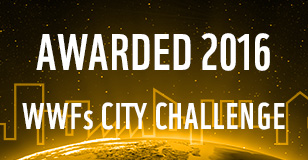The WWF is run at a local level by the following offices...
- WWF Global
- Adria
- Argentina
- Armenia
- AsiaPacific
- Australia
- Austria
- Azerbaijan
- Belgium
- Bhutan
- Bolivia
- Borneo
- Brazil
- Bulgaria
- Cambodia
- Cameroon
- Canada
- Caucasus
- Central African Republic
- Central America
- Central Asia
- Chile
- China
- Colombia
- Croatia
- Democratic Republic of the Congo
- Denmark
- Ecuador
- European Policy Office
- Finland
SINGAPORE

SolarNova multiplies solar installations
As a densely populated city-state on an island without hinterland, Singapore calls itself an "alternative-energy disadvantaged country". Investigations by the government have revealed limited opportunities for renewables, with even wind, tidal, and wave power potential restrained by low average wind speeds, low tidal range, and calm waters. Solar power is identified as the best bet, despite Singapore´s small size, and the new ambitious investments will be a test of its potential. SolarNova is a program launched in 2014 by the Singapore Economic Development Board (EDB), which works with government agencies to aggregate demand for solar deployment across government buildings and spaces.
By pooling investments, the program achieves economies of scale, and allows agencies to purchase solar power at a lower price that will not exceed the retail electricity tariff rate. And by using the solar leasing model, the government avoids upfront installation costs.
SolarNova also aims to catalyse a city-wide growth of solar energy in Singapore by building up the local solar industry and encouraging private sector adoption. Singapore is on track to increase its solar power capacity by five times to almost 100 MW already in 2015, thanks mainly to private sector installations. The city-state’s solar industry has been growing steadily over the past few years because of the drop in prices of solar panels and the government’s funding of research and development.
Intensified sustainability efforts
Singapore has set the goal of a 35% reduction in economy-wide energy intensity by 2030, from a 2009 baseline. Although high levels of energy efficiency have already been reached, Singapore continues its efforts with new goals. The city will encourage 75% of peak hour trips to be made by public transport by 2030 by extending its rail and bus network, as well as its network of cycling routes.
Singapore also aims to increase the waste recycling rate to 70% by 2030, while it has tightened green regulations for buildings and industry. A green vision for the city-state is laid out in the Sustainable Singapore Blueprint, updated every five years, where Singapore´s actions across the whole field of urban sustainability are presented.


© Singapore
World leader in water management
When it comes to water management, Singapore is already a world leader primarily because of its location as a densely populated city-state on an island lacking freshwater lakes. Thanks to the award-winning holistic work of Singapore’s Public Utilities Board (PUB), the city currently receives more than half of its water supply from the unorthodox sources of rainwater collection (20%), recycled water (30%) and desalination (10%). The long-term plan is to become entirely self-sufficient in water. In 2001, PUB also took charge of drainage systems, and this resulted in a more integrated management of water. It is the goal of Singapore to become self-sufficient, with 40% of water from recycling, 30% from desalination, and 20% from rainwater collection.
Well on the way to achieving this goal, the city has now broadened its strategy on water management with an ambitious plan for sustainable water management called ABC Waters (Active, Beautiful, Clean), from 2006. The vision is to integrate water management more closely with the urban environment, and the plan includes more than 100 projects for the next 10 years. One example is the Marina Bay, which in addition to providing fresh water, also functions as a green area for recreational activities.
Want to know more about Urban solutions?
Contact Barbara Evaeus
Global Communications Manager,
WWF One Planet City Challenge
+46 70 393 9030
barbara.evaeus@wwf.se
Text by: Martin Jacobson and John Manoochehri
Last edited: 2017-03-15


